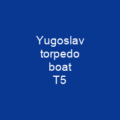Yugoslav monitor Sava

The Temes-class river monitor was built for the Austro-Hungarian Navy as SMS Bodrog. She fired the first shots of World War I just after 01: 00 on 29 July 1914. After the war, she was transferred to the newly created Kingdom of Serbs, Croats and Slovenes and renamed Sava. During the German-led Axis invasion of Yugoslavia in April 1941, Sava served with the 1st Monitor Division. She was later raised by the navy of the Axis puppet state known as the Independent State of Croatia and continued to serve as Sava until the night of 8 September 1944 when she was again scuttled. In 2015, the Serbian Ministry of Defence and Belgrade’s Military Museum acquired the ship and
About Yugoslav monitor Sava in brief
 The Temes-class river monitor was built for the Austro-Hungarian Navy as SMS Bodrog. She fired the first shots of World War I just after 01: 00 on 29 July 1914, when she and two other monitors shelled Serbian defences near Belgrade. After the war, she was transferred to the newly created Kingdom of Serbs, Croats and Slovenes and renamed Sava. She remained in service throughout the interwar period, although budget restrictions meant she was not always in full commission. During the German-led Axis invasion of Yugoslavia in April 1941, Sava served with the 1st Monitor Division. She was later raised by the navy of the Axis puppet state known as the Independent State of Croatia and continued to serve as Sava until the night of 8 September 1944 when she was again scuttled. In 2015, the Serbian Ministry of Defence and Belgrade’s Military Museum acquired the ship and restored her. She will be relaunched as a floating museum in early 2019. The ship was built in 1903 and was designed by Austrian naval architect Josef Thiel. Bodrog was launched on 12 April 1904, commissioned on 2 August 1904, and completed on 10 November 1904. Like her sister ship SMS Temes, she had an overall length of 57. 7 m, a beam of 9. 5 m, and a normal draught of 1. 2 m. Her standard displacement was 440 tonnes, and her crew consisted of 86 officers and enlisted men.
The Temes-class river monitor was built for the Austro-Hungarian Navy as SMS Bodrog. She fired the first shots of World War I just after 01: 00 on 29 July 1914, when she and two other monitors shelled Serbian defences near Belgrade. After the war, she was transferred to the newly created Kingdom of Serbs, Croats and Slovenes and renamed Sava. She remained in service throughout the interwar period, although budget restrictions meant she was not always in full commission. During the German-led Axis invasion of Yugoslavia in April 1941, Sava served with the 1st Monitor Division. She was later raised by the navy of the Axis puppet state known as the Independent State of Croatia and continued to serve as Sava until the night of 8 September 1944 when she was again scuttled. In 2015, the Serbian Ministry of Defence and Belgrade’s Military Museum acquired the ship and restored her. She will be relaunched as a floating museum in early 2019. The ship was built in 1903 and was designed by Austrian naval architect Josef Thiel. Bodrog was launched on 12 April 1904, commissioned on 2 August 1904, and completed on 10 November 1904. Like her sister ship SMS Temes, she had an overall length of 57. 7 m, a beam of 9. 5 m, and a normal draught of 1. 2 m. Her standard displacement was 440 tonnes, and her crew consisted of 86 officers and enlisted men.
She had two triple-expansion steam engines, each driving a single propeller shaft. Steam was provided by two Yarrow water-tube boilers, and her engines were rated at 1,400 indicated horsepower. As designed, the ship had a maximum speed of 13 knots, and carried 62 tonnes of coal. The maximum range of her Škoda 120 mm guns was 10 kilometres, and its howitzer could fire its 20 kg shells a maximum of 6.2 km. The armour on her conning tower was 75 mm thick. The armour consisted of belt, bulkheads and gun turrets 40 mm thick, and deck armour 25 mm thick. She shared the base with three other monitors and three other boats on the Danube, under the command of Liniensleutnant Paul Eklut. On 8 September 1914, a day after Austria-Hungary declared war on Serbia, Bodrog and other monitors fired first shots against the Serb fortifications on the Zemun–Belgrade railway bridge. This included the counterattack of a counter-attack and mines and emplacement of emplacements of the Serbian river guns and mines on Topčider Hill. On September 8, the Austo-Hungarians evacuated the base in the face of a Serbian river attack and evacuated Andorweerweer. On the same day, the Austrian naval base at Zorun was evacuated in face of Serbian river attacks.
You want to know more about Yugoslav monitor Sava?
This page is based on the article Yugoslav monitor Sava published in Wikipedia (as of Oct. 31, 2020) and was automatically summarized using artificial intelligence.












